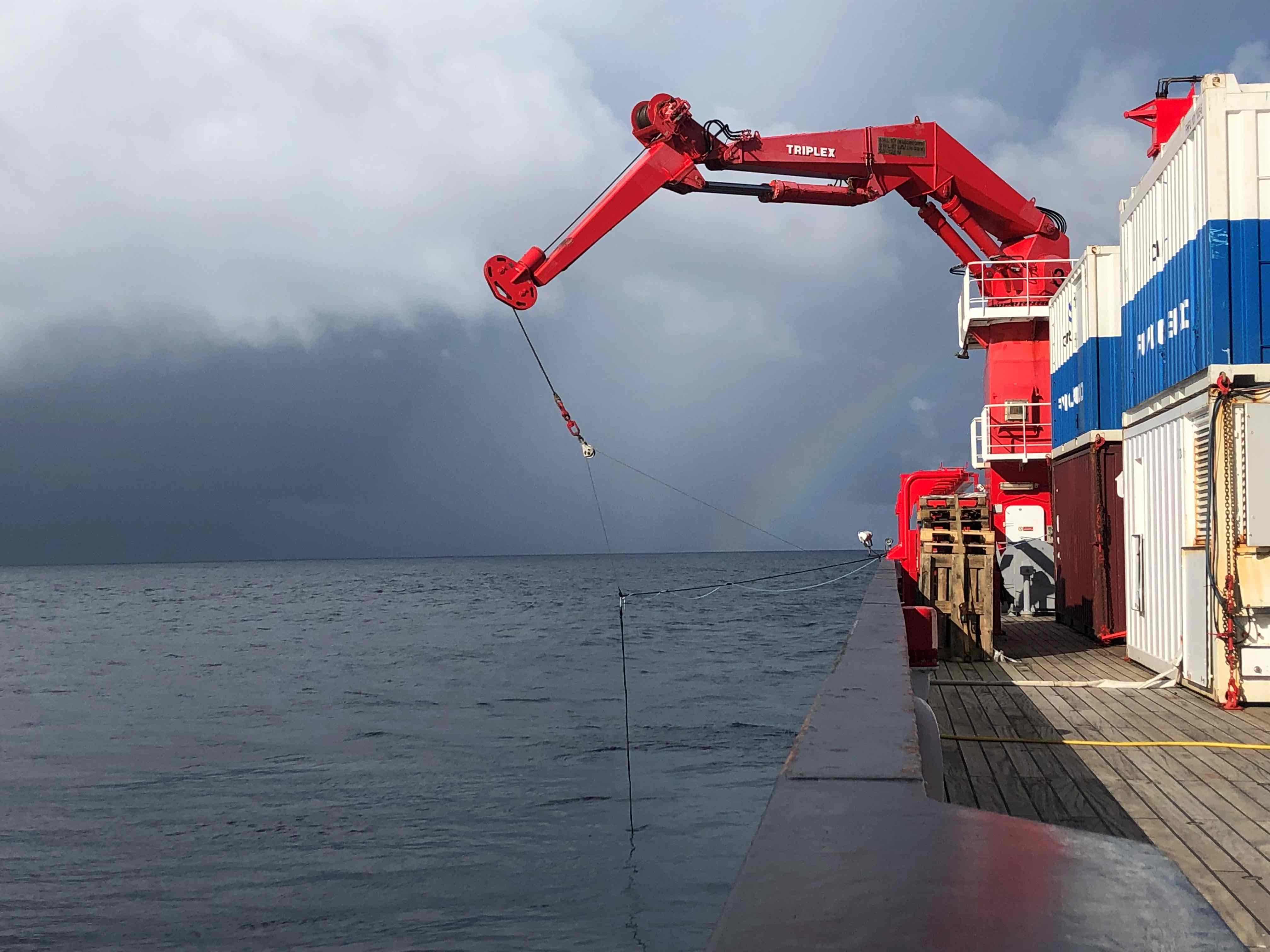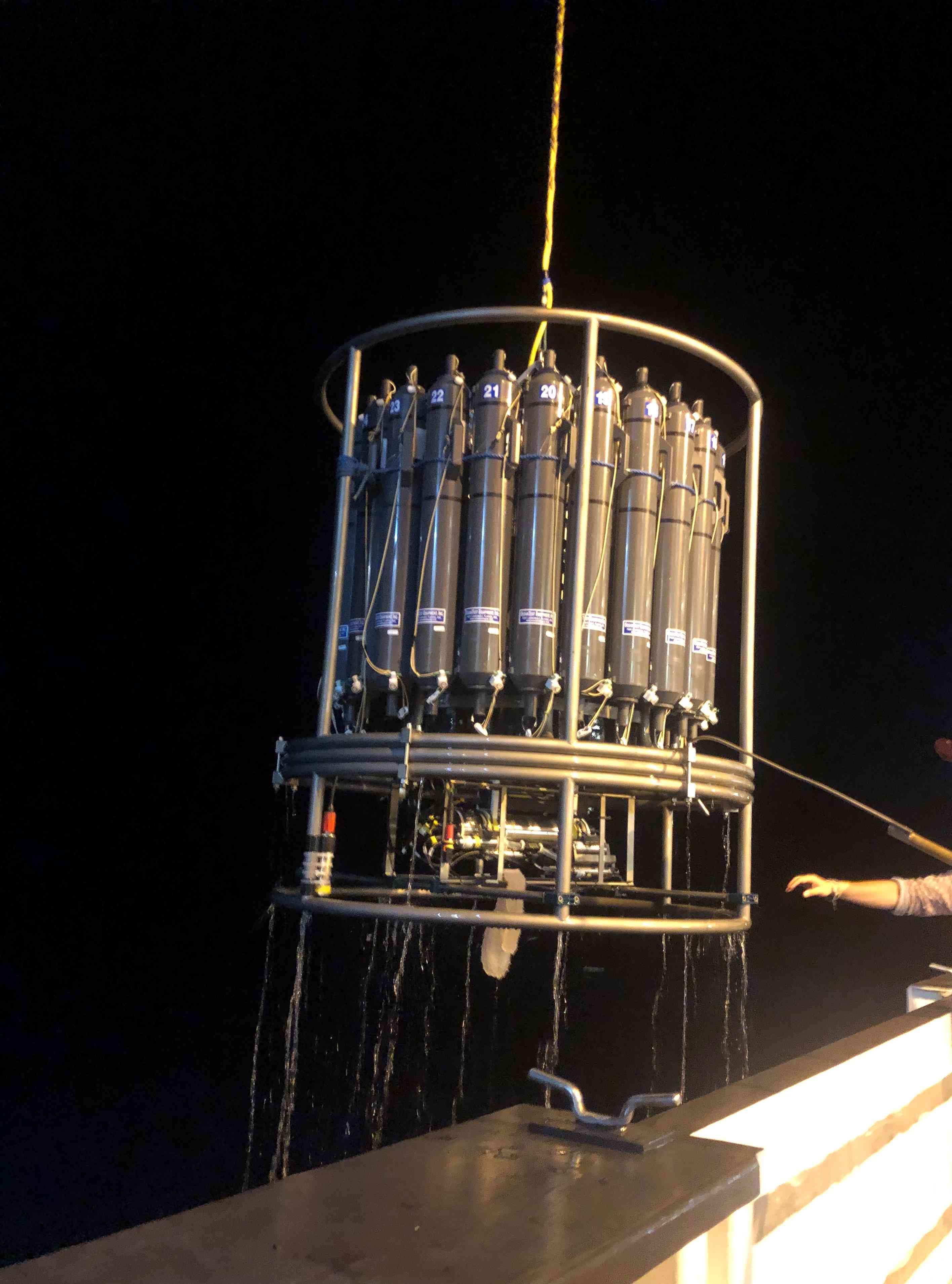Our Constructor University team (Adrienne, Natasha and Polina) is focused on collecting size-fractionated data for trace metals and metal-binding ligands. Specifically, we are collecting samples for high field-strength elements (HFSE), oxyanions, metal-binding organic ligands (Cu, Fe, Ni) and Cr and V speciation. Of these parameters, I am personally the most interested in organic ligands, which can heavily influence trace metal solubility, toxicity and bioavailability. A large focus of my PhD (defended last November) has been on Cu-ligands in the Amazon estuary; more than 99% of Cu in the ocean is bound to these organic ligands. As a result of extensive ligand complexation, I found that Cu in the Amazon estuary is dominant in the soluble (≤0.015 µm) fraction and never reaches toxic levels.
On cruise SO298, we are interested in studying these organic ligands, as well as other parameters, in different size fractions in order to see how size partitioning and concentration changes with depth (e.g., surface, OMZ, deep water) and ocean regime (e.g., upwelling region, open ocean, hydrothermal-influence). Size fractionation can influence trace metal biogeochemistry and availability; for example, a high concentration of colloids can cause removal of metals from the dissolved fraction due to colloidal flocculation. To obtain water samples at different sizes, our lab uses two methods: sequential filtration, and ultrafiltration. Sequential filtration uses filter towers to separate water fractions into the <0.8 µm, <0.2 µm and <0.015 µm fractions. We also save the particle-containing filters, which can be digested to obtain a mass balance. Ultrafiltration takes our filtering process a step further to collect a ≤10 kDa fraction (equivalent to roughly 4.4 nm). The process of ultrafiltration is especially intensive; processing one sample requires 6 L of water, and takes two people several hours to finish. Nevertheless, we plan to take several (4-6) ultrafiltered samples across different regions of this cruise, in parallel with more frequent sequential filtration, to examine in depth how size partitioning changes with different ocean regimes.


Outside of the lab, I’ve been enjoying watching birds, flying fish, squid, and floating pyrosomes (or ones accidentally pulled up by the CTD). I’ve been enjoying the warm, and sometimes rainy equatorial pacific, and even spotted a rainbow yesterday. Sometimes the sky clears enough to see the southern cross at night.
by Adrienne Hollister

I like the pyrosome.